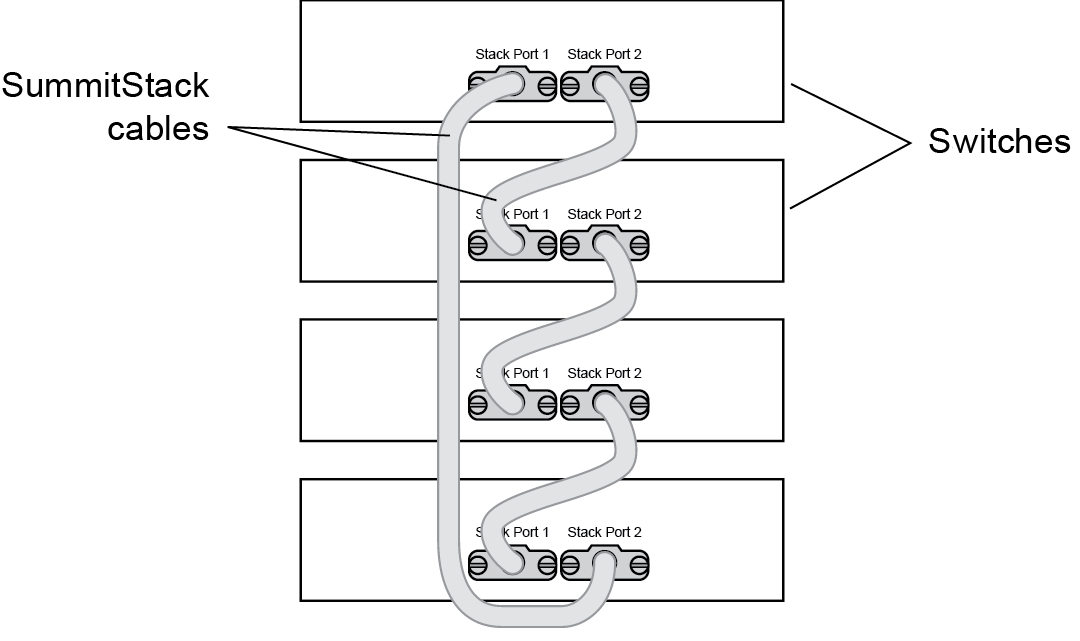Using the SummitStack feature – part of the ExtremeXOS Edge license – a stack can combine switches from different series, provided that every switch in the stack:
The stack operates as if it were a single switch with a single IP address and a single point of authentication. One switch – called the master switch – is responsible for running network protocols and managing the stack. The master runs ExtremeXOS software and maintains all the software tables for all the switches in the stack.
All switches in the stack, including the master switch, are called nodes. Switches Connected to Form a Stack shows four nodes in a stack, connected to each other by SummitStack cables.
All connections between stack ports must be directly between switches. A stacking connection cannot pass through a third device, for example a Virtual Port Extender or an LRM/MACsec Adapter.

The following sections introduce you to the basic principles of stacking and provide recommendations for creating stacks.
More information to answer your questions about stacking and help you plan your configuration is available on the Extreme Networks GTAC Knowledge Base.

 Print
this page
Print
this page Email this topic
Email this topic Feedback
Feedback